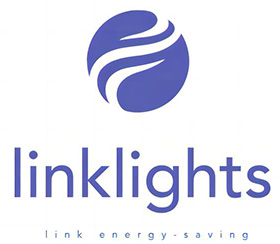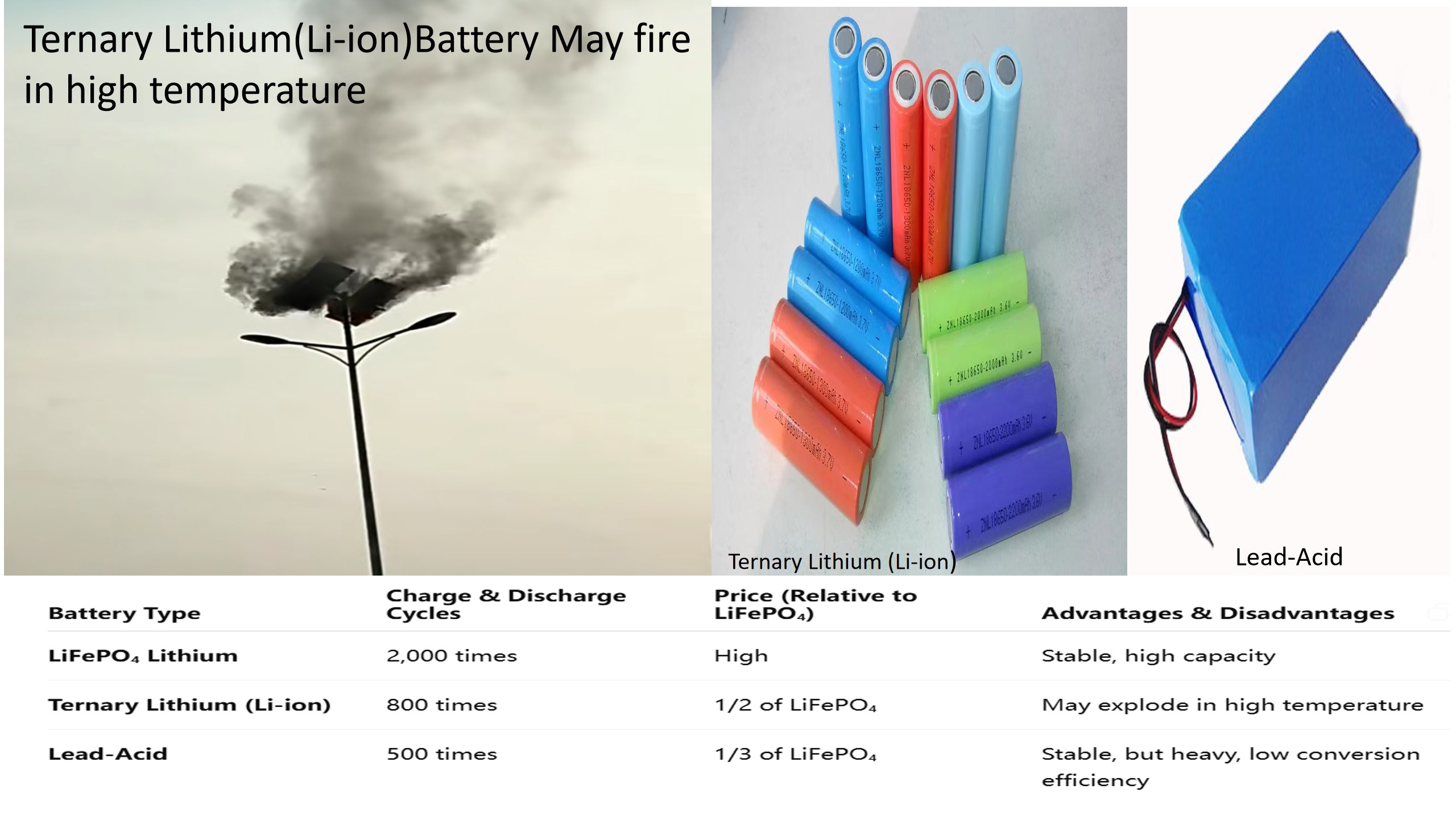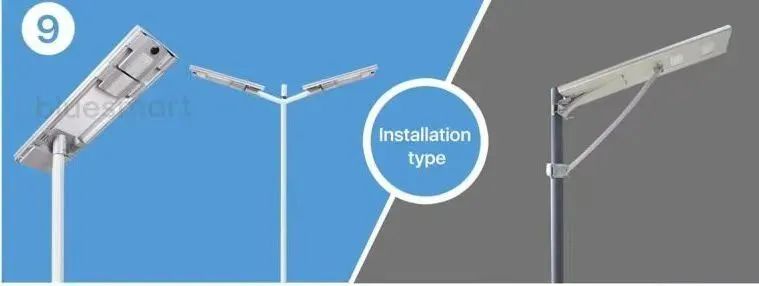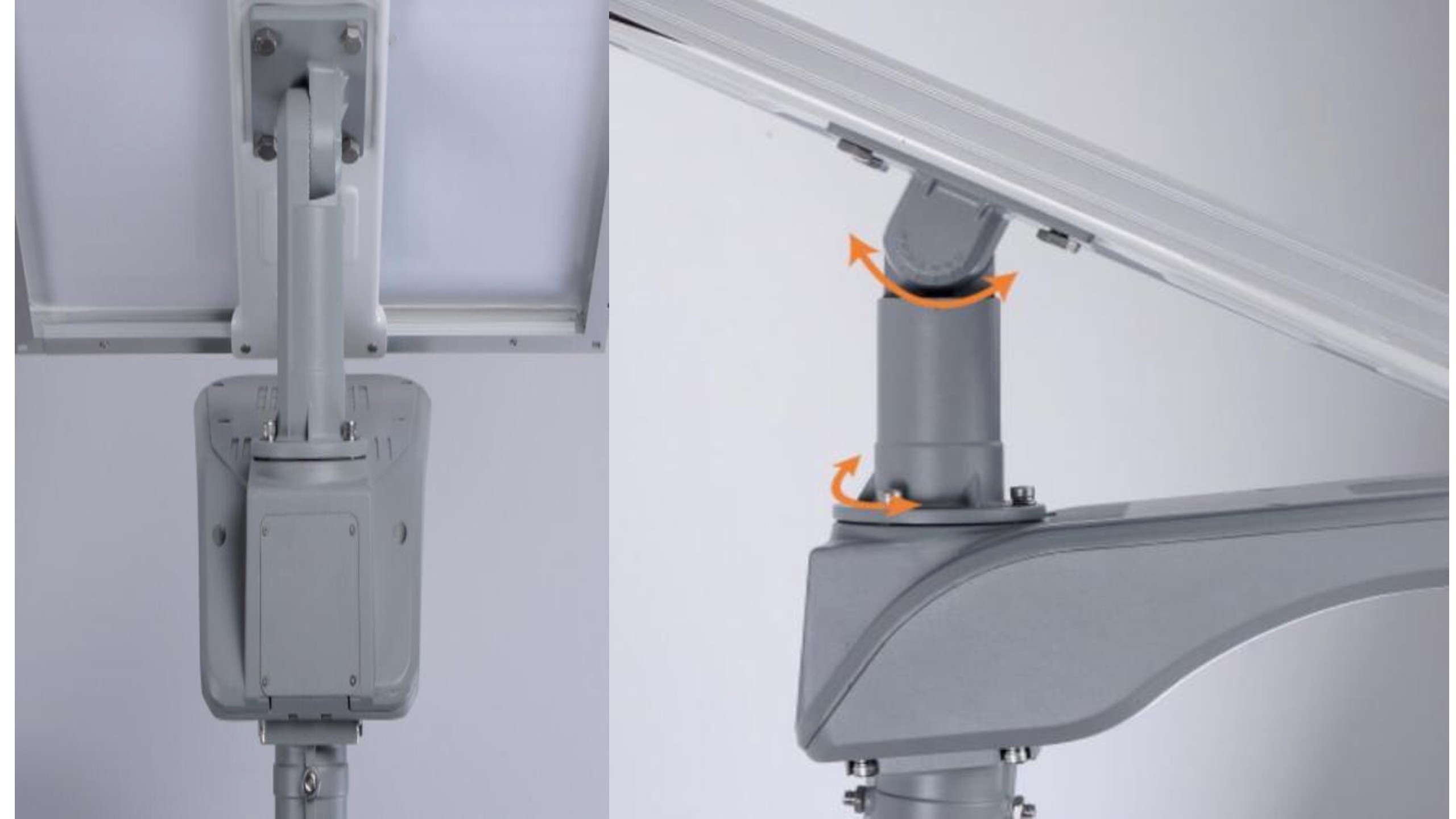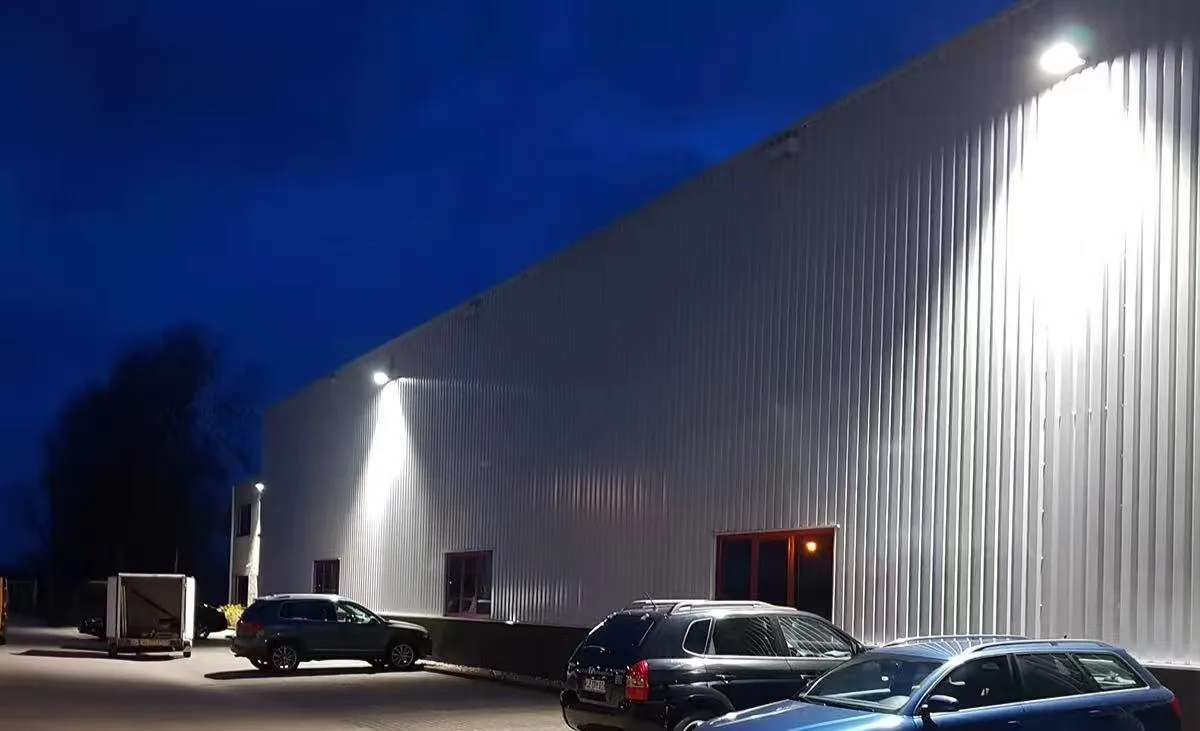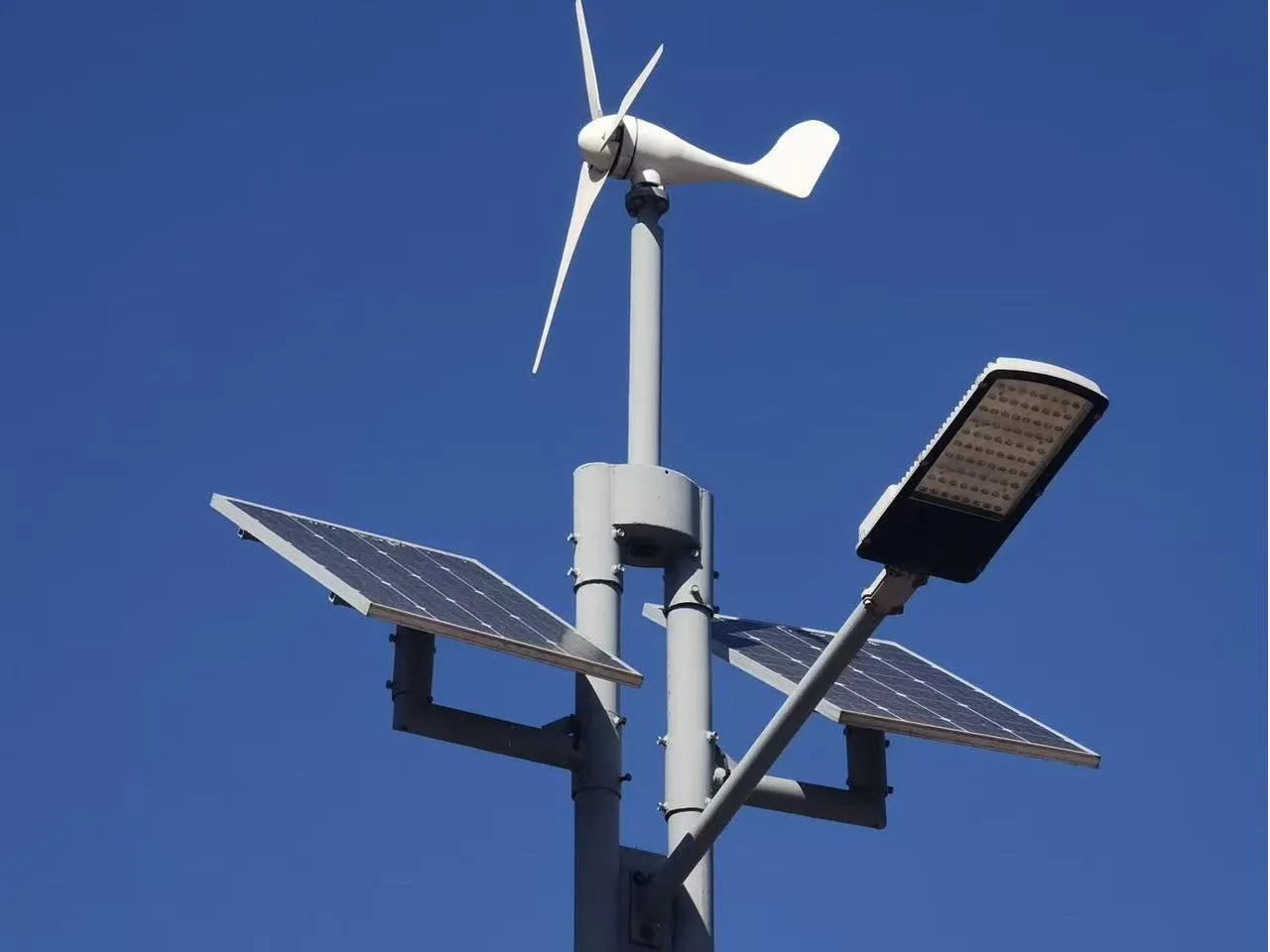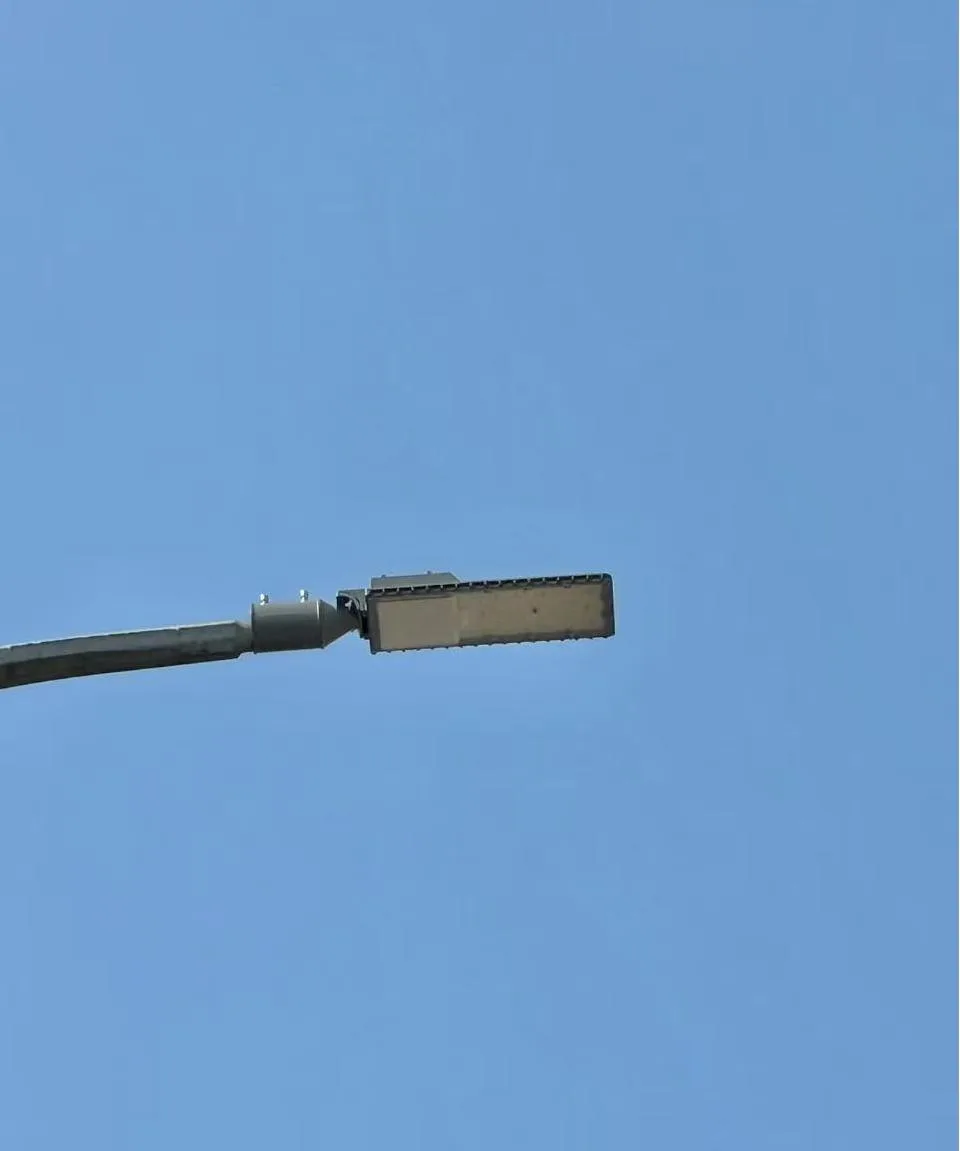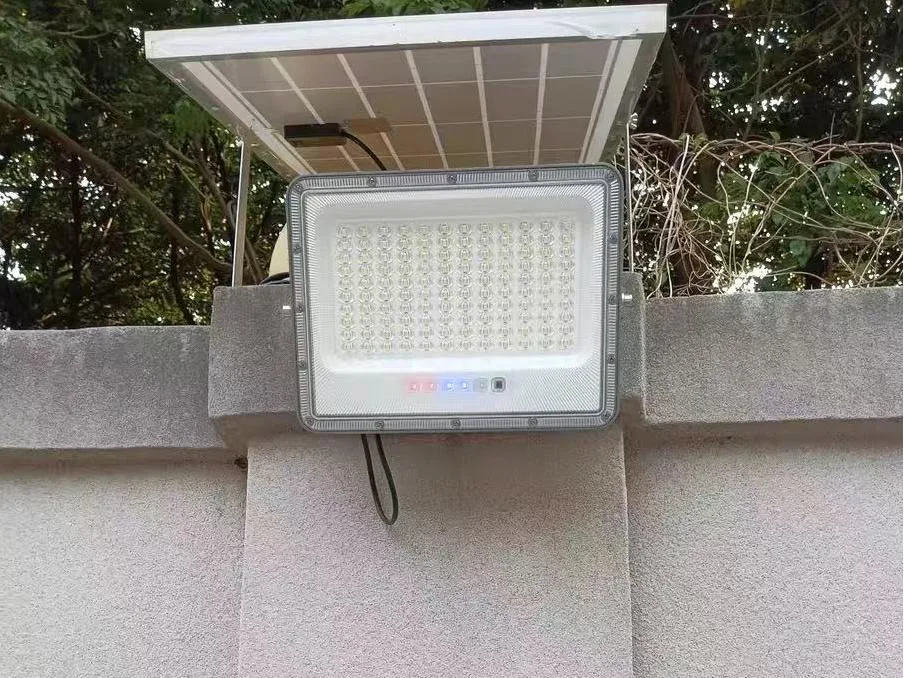Introduction – why using solar street lights is an advantage
Today, with higher energy costs and the need for green solutions, solar lights are a smart choice for green cities with solar street lighting and smart city street lighting projects. They use solar panels to collect sunlight, strong batteries to store it, and LEDs to give bright light at night. They work all year without adding to your power bill.
This guide will explain the basics—how long do solar street lights last, how bright they are, how long they run, and how to care for them. You’ll also learn step by step how to choose, set up, and look after solar lights, so they work well for many years.
Let’s start by learning how solar lights work and what parts make them perform best.
How solar street light systems Work
Core Components and Their Functions
A solar lighting system makes its own power and stores it to use at night. How well it works depends on how well its parts work together.
solar street light panel:converts sunlight into electrical energy.
solar street light battery:stores the electrical energy generated by the solar panel.
solar street light fixture:Converts stored energy into light. High quality LEDs last 25,000–100,000 hours and maintain brightness while consuming minimal power.
Control Module:Manages charging, discharging, and illumination schedules. Features can include dusk to dawn operation, motion sensors, dimming modes, and adaptive brightness to extend led light lifetime.
How does solar street light works:
Daytime: PV panel charges the battery via the control module.
Nighttime:Control module switches on the LED light, adjusting brightness according to programmed settings or detected motion.
Lifespan and Performance Factors
How long do solar street light batteries last
When people ask how long do solar lights last, the answer often comes down to the quality of the battery. Last year, a friend bought a low-cost solar street light online. It worked fine at first, but when winter arrived, problems started — the light would barely last three hours before shutting off. Upon inspection, we found it used a recycled lead-acid battery, which had already swollen after just six months.
Lead-acid batteries are cheap, which is why they’re common in budget models. However, they suffer severe performance loss in cold weather — around -10°C, capacity drops drastically — and they have a short cycle life (a few hundred charges). While the initial cost is low, frequent replacements make them expensive in the long run.
In contrast, Premium solar street lights use car grade LiFePO4 batteries. They work well even at -20°C and can give up to 14 hours of light in winter tests. These batteries last more than 2,000 charge cycles, giving over 5 years of use with daily charging. They are also safer, with special coatings to stop swelling or leaks.
Solar lights for street Performance in Winter — The Role of PV Panels
In winter, how well a solar light works depends more on the panel’s efficiency than its size. One neighbor used a street light with a 1.2meter panel. On cloudy days, it often could not run all night.
The reason was the panel type. Polycrystalline solar panel for lights are cheaper but have only 15–18% efficiency and lose much power in low sunlight. Monocrystalline panels can reach up to 23% efficiency. For example, a 0.8meter monocrystalline panel can store enough energy in four hours of weak winter sun to run a light from 7?PM to 5?AM. This is ideal for rural roads and courtyards.
Smart lighting controls to Extend solar street light lifespan
One way to make street lights solar powered last longer is by using smart lighting controls. Basic models stay bright all night until the batteries.for.solar.street lights run out. This wastes energy and shortens the battery life.
Smart systems use light and time sensors. They shine at 70% brightness in the evening when people are active, then dim to 30% after 2?AM. This energy efficient lighting cuts power use by about 20% each month and lowers the cost of a solar powered street light over time.
Outdoor solar street light Durability — Don’t Overlook the Pole
Outdoor solar street light strength also depends on the pole. After a storm last year, many thin poles (under 2?mm) bent or broke. They were made of low-grade steel.
A ruggedgrade solar street light should use 3?mm hot-dip galvanized steel. This type does not rust easily and stands strong in high winds. Even in storms, it stays stable and safe.
Some solar street light models also have a quick setup. They need no wires and take only 20 minutes to install, even without trained workers. This helps save money on labor.
Key Takeaway
By using LiFePO4 batteries, high-efficiency monocrystalline panels, strong solar street lighting systems, and thick galvanized poles, you can help solar lights work better in winter, last longer outdoors, and stay bright for many years. These are key things to know before you buy — and we’ll explain them more in the next part.
How to choose solar street light
Not all outdoor street solar lights are created equal. Understanding the differences between premium and lowcost models is key:
Luminous Efficacy and Lifespan
When checking how long do led light fixtures last and how bright they are, don’t just look at the starting brightness. Good lighting chips, like Philips 3030, can last up to 100,000 hours (around 11 years) with less than 5% light loss each year. Poor chips, such as no-name COBs, may lose over 50% brightness in just one year.
Also, more chips don’t always mean bright solar street lights. What matters more is power. For example, Philips 3030 chips give the best light at 0.5 to 0.7 watts each. Adding more chips without increasing power won’t make the light much brighter.
Lamp Body and Structure
Good aluminum solar led street light use strong die-cast housing. It is light, tough, does not rust, and lasts a long time. They also use stainless steel screws that can handle wind speeds up to 130 mph—so even if a streetlight is in a windstorm, it stays stable. Bad lights use cheap materials and rough work. They often need a solar street light mounting bracket to stay stable, but still shake or bend in strong wind.
Heat Dissipation Design
In summer, solar panels can get as hot as 90°C, and the lamp body’s internal temperature can reach 70°C. Too much heat can hurt the battery and LED light. Good solar lights keep the panel away from the lamp and use shade designs to stay cool. This helps the battery and LED last longer.
Adjustable led street light solar panel
Different places get sunlight from different angles. If the solar panel can turn to face the sun, it will catch more sunlight and make more power.
But cheap solar street light fixtures often use fixed panels. These cannot turn, so they get less sunlight and make less energy.
Verify with Reviews and Certifications
A strong purchase decision is backed by third party validation:
User Reviews: Look for comments from real buyers who have used the product for a long time, especially in weather like yours.
Performance Testing: Good brands share clear data like how bright solar street light is, how long it runs, and how long the solar battery for street light lasts.
Certifications: Check if the product has labels like CE, RoHS, UL, or IEC, and make sure it has a waterproofness rating (IP rating).
Why It Matters: Products with trusted labels and happy customers are more likely to work well and last longer.
Designing for All Night Illumination
Ensuring your street lighting solar system stays on from dusk to dawn requires careful load planning, energy storage sizing, and intelligent control strategies.
Load and Storage Planning
Proper system sizing starts with understanding how much energy your lights need and how much your site can provide
How to Plan Energy for Solar Lights at Night
Calculate Night Use: Multiply solar street light wattage by how many hours it’s on.
Example: 20 watts × 12 hours = 240 watt-hours (Wh) each night.
Think About Seasons:Winter nights are longer, so your system needs more energy than in summer.
Add Backup Days:Plan for at least 3 days of extra power for cloudy or rainy weather.
Add a Safety Buffer:Increase your energy storage by 20–30% to avoid surprise power loss.
By planning battery and solar panel size the right way, your lights will stay bright even when there’s not much sun.
Commercial vs Residential Configurations
Choosing between commercial grade and residential systems depends on your performance and budget needs:
Commercial-Grade Systems
Lifespan: Can work up to 20 years if well cared for
solar street light battery replacement: LiFePO4 batteries need changing every 5–7 years
Easy to led upgrade: You can upgrade the solar panel, battery, or controller
Applications: City roads, factories, big parks, and busy areas
Residential Systems
Lifespan: Typically 3–8 years.
Lower Initial Cost: Smaller panels, smaller batteries, and simple parts
Applications:Gardens, patios, and small walkways
Smart Tip: For big or important projects, commercial lights cost more at first but save money later because they last longer and can be upgraded.
Maintenance
Even the best designed solar lighting systems require regular upkeep to maintain performance and ensure maximum lifespan. Proper maintenance not only safeguards your investment but also prevents unexpected failures.
Cleaning the Solar Panel
How Often: Clean the panel every 6 months. If you live in a dusty or seaside area, clean it once a month.
How to Clean: Use a soft cloth, warm water, and gentle soap. Don’t use rough tools that can scratch the panel.
Why Clean It: Dust can block sunlight. Even a little dust can cut power by 20%, making the light run for less time at night.
Battery Management
When to Replace: Follow what the maker says. For example, LiFePO4 batteries last 8–15 years, and lithium-ion batteries last 3–5 years.
If Storing: Charge the battery fully first. Then unplug it to stop it from losing too much power.
Watch for Problems: If the light doesn’t stay on as long as before, the battery might need to be replaced.
Inspection of Components
Look for cracks, loose screws, or broken seals that could let water get inside.
Check the wires for damage, rust, or signs that animals may have chewed them
Make sure motion sensors, timers, and control parts work properly when triggered by light or movement.
FAQs
Q1: How many lumens should garden lights have?
Ambient pathways: 50–150 lumens
Garden feature highlights: 150–300 lumens
Security or task lighting: 500–1,000 lumens
Q2: How should I check warranty and replacement policies?
Look for a 3+ year battery warranty, 5+ years on PV panels, and at least 1–2 years for electronics. Ensure the supplier offers clear instructions and accessible spare parts.
Q3: Can solar lights work during winter or cloudy days?
Yes, but performance depends on solar panel efficiency and battery capacity. High efficiency monocrystalline panels and larger battery storage help maintain illumination even during long winter nights or consecutive cloudy days. (See Section 3.2 for details.)
Q4: What is the best battery type for long lasting solar lights?
Grade A or B LiFePO4 batteries offer the longest lifespan (5+ years) and stable performance in extreme temperatures. Lithium-ion batteries are lighter and cheaper but have shorter lifespans. Lead-acid batteries are the most affordable but less durable. (See Section 3.1 for details.)
Q5: How often should I perform maintenance on my solar lights?
Clean the panels every 6 months (monthly in dusty/coastal areas), check batteries annually, and inspect fixtures for damage or corrosion to ensure optimal performance. (See Section 6 for detailed maintenance tips.)
Conclusion
Choosing the right solar lighting system comes down to matching the product to your application, investing in quality components, and planning for longterm maintenance. Commercial-grade systems suit high-demand environments and deliver a better lifetime value, while residential options meet decorative or light-duty needs at a lower initial cost.
By considering key performance factors such as battery type, solar panel efficiency, smart controls, and structural durability, you can ensure reliable illumination for years. Regular maintenance — including panel cleaning, battery checks, and timely replacements — will maximize lifespan and performance.
